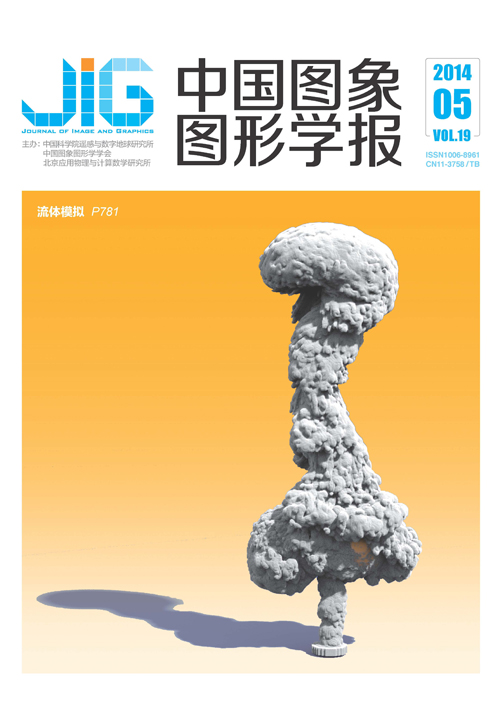
交错网格结构的涡粒子烟模拟
摘 要
目的 流体模拟方法中的基于旋度的模拟方法相比于基于速度的模拟方法,能提供较多细节,但是通常难以处理不同的边界条件,比如固体边界和自由表面,而且通常难以保证模拟的稳定性。本文的目的就是为了解决基于旋度的模拟方法的边界问题和稳定性问题。方法 提出一种交错网格结构,在这种网格结构下,旋度分量被错开放置在每个网格的棱的中心点。利用这种网格离散格式,提出了几种修改求解速度场方程组的策略,以应对不同的边界条件。结果 给出多种场景下的流体模拟结果图,以及几种场景下的总动能变化图和时间效率表。结果显示,本文方法能够处理好不同边界条件,并保持模拟的稳定性。结论 本文提出了一种新的涡粒子流体模拟方法,该方法利用一种交错网格结构辅助模拟,在这种新的网格离散格式下,该方法解决了基于旋度的模拟方法的边界问题和稳定性问题。
关键词
Staggered grid structure for smoke simulation
Abstract
Objective Fluid animation has recently become more popular and it is widely used in industrial fields, like movies, animation, and games. Because of the complexity of its movement, various methods have been presented to produce visibly pleasing effects. The commonly used simulation methods are velocity based methods. However, they suffer from fast loss of fluid details. In order to maintain details in the simulation process, vorticity based methods produce many impressive effects. However, they suffer from serious problems when considering boundaries and the problem of stability. Our goal is to produce methods to get rid of these drawbacks. Method We use vortexes to represent the vorticity of the domain. Similarly to other vortex methods, we also do convection, stretching and adding body force. However, we use a new grid to compute the velocity. With this new grid structure, we stagger the different components of vorticity on the center of edges of each voxel. This grid structure is highly compatible with the commonly used grid structure, which staggers the different components of velocity on center of faces of each voxel. Using this grid structure, we can easily cope with different boundaries including solid boundaries and free surfaces, and we can easily enforce incompressibility in one voxel. Result We present several scenes of smoke animation to represent the capability of our method to cope with different boundaries. Moreover, we also present a chart about the energy changing process in these scenes with fixed vortexes with an initial vorticity vector. Furthermore, we neglect the body force in this experiment. The chart shows that our method is very stable and the amplitude of the energy wave is less than 0.005%. Conclusion We present a new vortex method with a new grid structure. Byusing this new grid structure, our method can process with different boundaries, including solid boundaries and free surface. Moreover, the results show that our method can preserve fluid details in the simulation process and it is very stable.
Keywords
|



 中国图象图形学报 │ 京ICP备05080539号-4 │ 本系统由
中国图象图形学报 │ 京ICP备05080539号-4 │ 本系统由